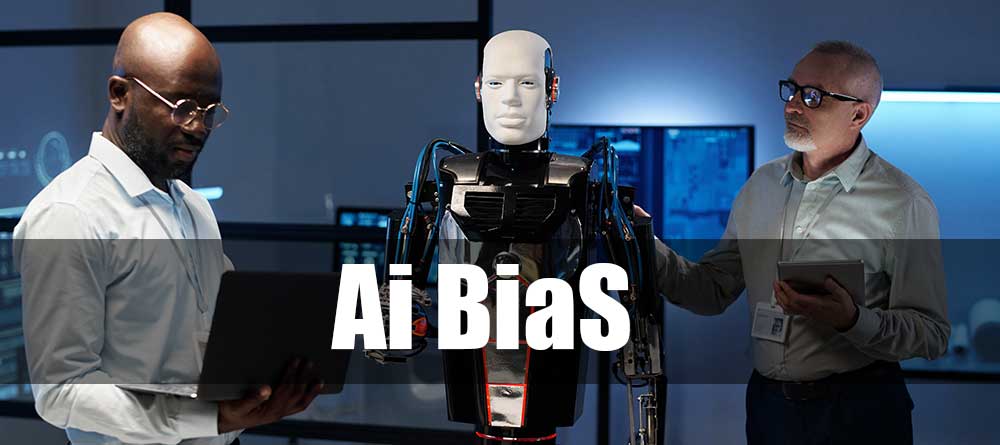Introduction to Ethical AI and Bias Mitigation
As artificial intelligence (AI) becomes more integrated into decision-making processes across various sectors, the issue of ethical AI and bias mitigation has gained increasing attention. AI systems are transforming industries such as healthcare, finance, and criminal justice. However, the biases inherent in these systems pose significant challenges, potentially leading to unfair, discriminatory, or inaccurate outcomes.
Ethical AI refers to the design, development, and deployment of AI systems that adhere to principles of fairness, transparency, and accountability. A key issue within ethical AI is bias, which arises when AI systems produce skewed or unjust outcomes due to flawed data, algorithms, or societal factors. The need to mitigate bias is paramount to ensure that AI systems do not perpetuate existing social inequalities.
This article explores the complexities of ethical AI, the various types of biases, strategies for bias mitigation, the advantages and disadvantages of current approaches, and the ongoing challenges faced in creating fair and transparent AI systems.
Understanding Bias in AI
Bias in AI refers to the systematic favoritism or discrimination embedded within machine learning algorithms and data sets. These biases can significantly affect the performance and fairness of AI systems. Bias in AI can manifest in several ways, with different origins and consequences.
Types of Bias in AI Systems
- Data Bias: Bias that arises due to unrepresentative or skewed training data. For instance, an AI trained on data that over-represents one demographic group may produce inaccurate or biased results for underrepresented groups.
- Example: Facial recognition systems trained primarily on data from light-skinned individuals often have lower accuracy rates for dark-skinned individuals.
- Algorithmic Bias: Bias that occurs due to the way machine learning algorithms are designed. This can happen if the algorithm amplifies existing biases in the data or prioritizes certain features over others without human oversight.
- Example: Credit scoring algorithms that inadvertently favor applicants from wealthier backgrounds due to the types of features they prioritize.
- Interaction Bias: This type of bias occurs when the user’s interactions with an AI system influence the AI’s output in biased ways. It can happen when feedback from users reinforces certain patterns or stereotypes.
- Example: AI-driven recommendation systems that continue to suggest content similar to what a user has interacted with in the past, potentially leading to confirmation bias.
- Historical Bias: This occurs when historical data used for training AI reflects past discrimination or social inequality. If AI models are trained on such data without modification, they may inadvertently reinforce these biases.
- Example: Predictive policing algorithms that rely on past crime data, which may disproportionately reflect over-policing in minority communities.
- Cultural Bias: This occurs when AI models are developed based on the norms and biases of a particular cultural context, failing to account for diverse global perspectives.
- Example: A language processing AI that is more effective in one language (e.g., English) than in others due to cultural and linguistic differences.
Ethical Concerns in AI
The deployment of AI systems raises several ethical concerns, particularly in relation to bias. These concerns include:
- Discrimination: AI systems that perpetuate or exacerbate existing biases may lead to discriminatory outcomes. This could affect decisions related to hiring, loans, sentencing, and more, resulting in unfair treatment for individuals based on race, gender, or other demographic characteristics.
- Privacy: AI systems often require access to vast amounts of personal data, which raises concerns about data privacy and security. Ethical concerns arise regarding the collection, storage, and use of sensitive information.
- Accountability: When AI systems make decisions, it may be unclear who is responsible for those decisions, especially when they are automated. Determining accountability is essential for addressing errors or injustices caused by AI.
- Transparency: AI systems, particularly deep learning models, often operate as “black boxes,” meaning their decision-making processes are opaque. This lack of transparency can make it difficult to identify and address biases.
- Exclusion: Certain demographic groups, particularly those who have historically been underrepresented in AI development, may be excluded from the benefits of AI, reinforcing existing inequalities.
Bias Mitigation Strategies
Several strategies are being developed and implemented to mitigate bias in AI systems. These approaches aim to make AI systems more fair, transparent, and accountable.
1. Diverse and Representative Data Sets
- Solution: One of the most effective ways to reduce bias in AI is to use more diverse and representative datasets. Ensuring that the data reflects the variety of experiences, cultures, and backgrounds that AI systems will encounter in real-world applications is critical.
- Challenges: Obtaining diverse data can be challenging, especially in niche applications. Furthermore, the process of curating and cleaning data to ensure it is representative can be resource-intensive.
2. Bias Detection and Auditing Tools
- Solution: AI developers can use bias detection tools to assess the fairness of their models and algorithms. Regular audits can help identify and correct biases before deployment.
- Tools: IBM’s AI Fairness 360, Google’s What-If Tool, and Microsoft’s Fairlearn are examples of tools that help detect and mitigate bias in machine learning models.
3. Explainable AI (XAI)
- Solution: Explainable AI refers to AI systems designed to provide transparency and interpretability. By making AI decisions more understandable, XAI allows developers and users to spot and correct biases.
- Benefit: Explainability also helps build trust in AI systems, as users can better understand how decisions are made, reducing concerns about fairness.
4. Algorithmic Transparency and Open Models
- Solution: Ensuring that the algorithms used by AI systems are transparent and accessible for inspection can help detect and mitigate biases. Open models enable external audits and feedback, fostering fairness.
- Example: OpenAI, an initiative to promote open-source AI models, encourages transparency and collaboration in AI development.
5. Human-in-the-Loop (HITL) Models
- Solution: A human-in-the-loop approach involves humans overseeing AI decision-making processes, ensuring that AI systems remain aligned with ethical standards and fairness principles.
- Benefit: This strategy can be particularly useful in high-stakes applications such as healthcare, criminal justice, and finance.
Real-World Applications of Ethical AI and Bias Mitigation
1. Healthcare
- Challenge: AI systems in healthcare must be trained on diverse patient data to ensure equitable outcomes. Bias in healthcare AI could lead to misdiagnosis or inappropriate treatment plans, especially for marginalized groups.
- Solutions: Many healthcare AI companies, such as DeepMind and IBM Watson, are working to ensure that their models are trained on diverse datasets and adhere to ethical standards in medical decision-making.
2. Hiring and Recruitment
- Challenge: AI tools used in hiring decisions may unintentionally favor certain candidates based on biased data, leading to discrimination in the hiring process.
- Solutions: Companies like HireVue are incorporating bias-mitigation techniques and fairness audits into their recruitment AI systems to ensure that hiring decisions are fair and inclusive.
3. Criminal Justice
- Challenge: AI tools used for risk assessments in the criminal justice system can perpetuate racial and socioeconomic biases if not properly managed.
- Solutions: Tools like COMPAS (Correctional Offender Management Profiling for Alternative Sanctions) are increasingly under scrutiny for fairness. Efforts are being made to redesign these systems to ensure they do not disproportionately harm minority communities.
Advantages and Disadvantages of Ethical AI and Bias Mitigation
Advantages:
- Fairness: Ensures that AI systems make decisions that are not biased against specific groups, leading to fairer outcomes in sectors like healthcare, finance, and criminal justice.
- Trust: By making AI systems transparent and accountable, trust in these systems can be increased among users and the general public.
- Improved Decision-Making: Bias mitigation can lead to more accurate, well-rounded decision-making, especially when AI is used to analyze complex data.
Disadvantages:
- Implementation Challenges: Mitigating bias in AI requires significant effort, time, and resources. It can be particularly challenging to obtain diverse data sets and develop algorithms that are both fair and accurate.
- Potential Overhead: The additional processes required for bias audits, fairness checks, and transparency efforts can increase the complexity and cost of AI system development.
- Risk of Overcorrection: In the attempt to mitigate bias, there’s a risk of overcorrecting or introducing new biases or limitations into the AI system.
Conclusion: The Future of Ethical AI and Bias Mitigation
As AI continues to evolve and permeate various aspects of society, the ethical implications of its deployment cannot be ignored. The need for fairness, transparency, and accountability is paramount to ensuring that AI systems benefit everyone equally. Addressing bias is a critical part of this effort.
The development of more diverse datasets, transparency tools, explainable AI, and human oversight will continue to shape the ethical landscape of AI. While there are challenges in implementing these solutions, the benefits of fair, unbiased AI are significant—leading to improved outcomes, greater trust in AI systems, and a more inclusive future for all.



